Today's Guide to the Marketing Jungle from Social Media Examiner... | Presented by | 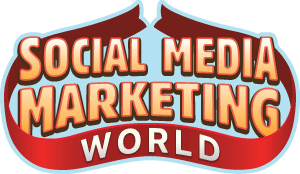 |
It's Learn to Ski and Snowboard Month, Alluser! Pizza, French Fries. Pizza, French Fries. IFYKYK.
In today's edition:
-
💬 Today's Tip of the Day is for Instagram
-
♻️ Custom LinkedIn newsletter templates
-
🎶 Making music with AI
-
📊 Analytics built for marketers
-
Instagram grid changes
-
Instagram algorithm details
-
YouTube creative feature updates
-
🗞️ Additional industry news from Instagram, Meta, LinkedIn, and more

Are too many people passively watching your Instagram stories? Looking for a tactic proven to generate engagement?
Have you ever noticed how answering someone's question leads to ideas that lead to more questions being asked and answered? Follow this advice to see the same behavior in your stories.
Use the Question Sticker for Flywheel Engagement
First, create an IG Story that includes the question sticker. Type in a question designed to elicit more questions, such as, "What's your biggest struggle with marketing on Instagram?"
Next, post your story and watch it. When you see the question sticker, tap on the sticker's comment box and type in a question people frequently ask you.
This will spark related questions from your viewers!
Finally, view all the answers and respond directly to the viewer or respond by creating a new Story with the question sticker on the screen.
Today's tip was inspired by Chelsea Peitz, a featured speaker at Social Media Marketing World.
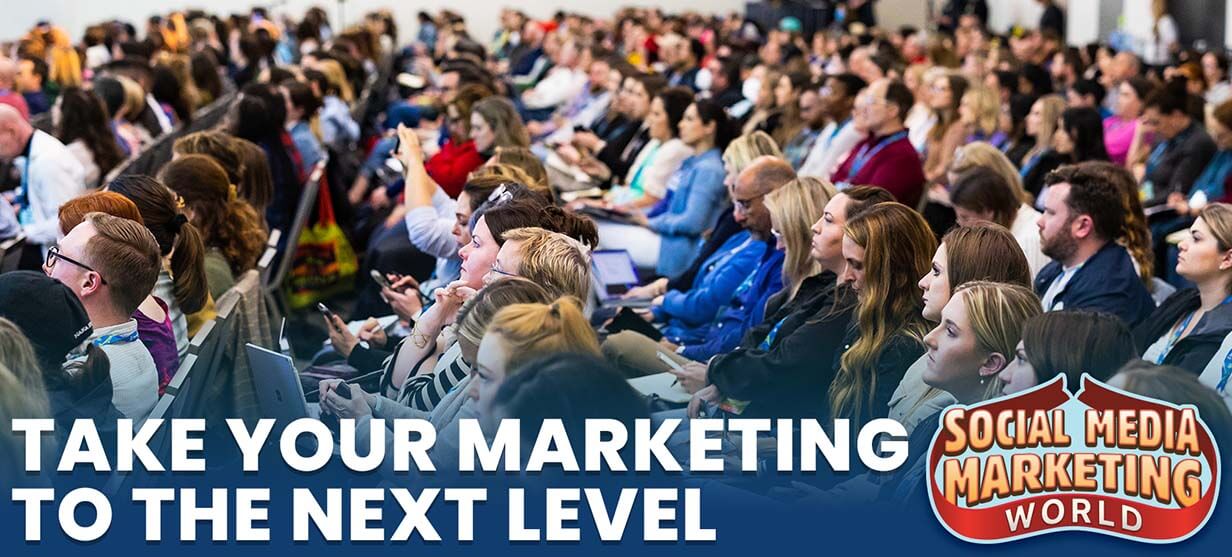
What If There Was An Easier Way, Alluser?
Marketing is tough. And it's NOT getting easier. But getting great results doesn't have to be hard—if you have the right strategies.
Where can you discover what's working now? At Social Media Marketing World.
With your All-Access ticket, you'll:
✅ Discover new strategies that improve your marketing results.
✅ Fortify your marketing plans for 2025 and beyond.
✅ Become more valuable to your company or clients.
Get advanced training on marketing strategy, AI, and so much more at Social Media Marketing World 2025–taking place Mar 30-Apr 1. Secure your All-Access ticket today, and you'll save over $500.
I'm looking for an easier way in 2025.
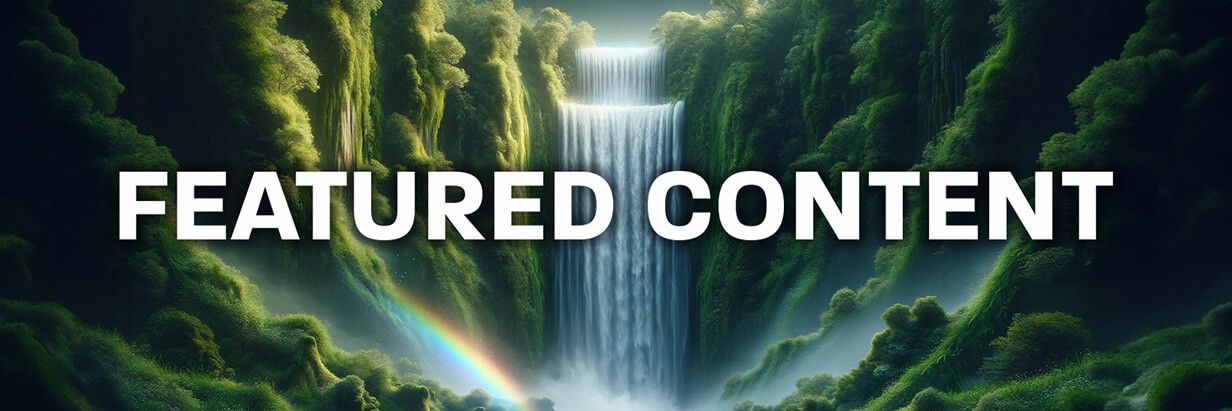
How to Create a LinkedIn Newsletter Template
Are you publishing LinkedIn newsletters? Wondering how to create a reusable template to save time and ensure consistency?
While LinkedIn doesn't offer built-in templates, here's how to create a reusable draft for consistent, professional newsletters.
Set Up Your Base Draft
-
Start by accessing your Newsletter section and selecting Create New Edition or by clicking the +Create button from your page or profile and choosing Article.
-
Choose a descriptive title that identifies this as your template.
-
Click Write here. You can also include @ mentions to begin structuring your content with draft sections such as an opening, feature content, call to action, and closing.
Essential Text Formatting Tools
LinkedIn provides several formatting options to enhance readability.
Text Styling
-
Three basic styles: Normal, Heading, and Subheading
-
Text emphasis with Bold and Italic options
-
Clean separation using the Divider feature between sections
List Organization
As you move through the setup of your draft, make key content stand out with the following:
-
Blockquote formatting for important quotes or highlights
-
Code blocks for technical content (appears as white text on a dark background)
-
Custom link text for clear, professional navigation
Media Embed Tools
Embed content from LinkedIn and other platforms to make your articles more dynamic. However, once you add the content to your draft, it becomes public.
Share LinkedIn Content
Bring conversations and updates directly into your article by embedding LinkedIn posts. Whether it's text updates, videos, or photo collections, you can seamlessly integrate them using a simple code snippet.
Enhance with External Content
Enrich your articles with content from popular platforms by simply pasting the content's direct link. Compatible platforms include:
-
YouTube, Vimeo, and Spotify for videos and audio
-
Megaphone and Omny for podcasts SlideShare for presentations
-
SoundCloud for music and audio tracks
Save and Use Your Template
When your draft is complete, close it!
When you want to create a newsletter using this template, you have two options:
-
Open your Newsletter section and select Create New Edition.
-
From your company page or profile, click the +Create button and choose Article.
Then, open the Manage dropdown and select Drafts. Find your template draft and click the 3-button menu, then click Duplicate as a draft. You're all set!
Today's advice is provided with insights from Judi Fox, a featured guest on the Social Media Marketing Podcast and presenter at Social Media Marketing World.

AI Music for Business: How to Get Started
Are you thinking of using AI music in your marketing? Wondering how to create original tracks for your business?
Music and marketing have been intertwined for nearly a century, with the first commercial jingle appearing in a Wheaties radio advertisement in 1926.
AI music opens up numerous possibilities for marketers who previously avoided music due to a lack of expertise or budget constraints.
In this article, you'll discover what you need to create AI-generated music for videos, podcasts, and ad campaigns. Plus, you'll get a behind-the-scenes look at how our Senior AI Marketing Strategist, Dan Sanchez, created a song for a social media post.
Creating AI Music: The Tools
Creating AI music requires two primary tools.
First, you'll need a text generation like ChatGPT to create lyrics. You can also use it to identify and understand music genres you can describe but can't put a name to. This is helpful for non-musicians who need guidance on musical styles and terminology.
Second, you'll need a music generation tool. Dan recommends Suno.ai and Udio.com. While both offer free and paid tiers, Udio provides the added benefit of commercial rights to the music you create.
When you begin creating music, lyric development will take about 15-20 minutes, and music generation will take 1-1.5 hours. The entire process should take approximately 2 hours per song.
BTS: A Social Media Marketer's "12 Days of Christmas"
Sanchez created this holiday post by developing a professional-quality parody of "The 12 Days of Christmas" specifically for social media marketers. Here's how he did it:
Step 1: Lyric Generation with ChatGPT
Sanchez approached ChatGPT with a specific vision: a fun, industry-specific holiday song that would resonate with social media marketers. He worked through several iterations with ChatGPT to craft lyrics that balanced humor with relatable professional challenges.
Genre/Style: Fun and festive parody of "The 12 Days of Christmas" Theme: Celebrating the challenges and wins of social media marketers during the holiday season Tone: Lighthearted, humorous, and relatable Perspective: From the viewpoint of a social media marketer (or team) during the holidays Key Phrases/Imagery: "Engagement soaring through the roof" "Twelve scheduled posts publishing" "A client calling for last-minute changes" "Ad budgets climbing higher and higher" "Trend-chasing on TikTok" Structure: Mirror the structure of "The 12 Days of Christmas" with escalating lines that fit industry-specific struggles and wins Specific Requests: Include humorous but relatable social media terms (e.g., hashtags, algorithms, content calendars) and a mix of chaos and joy marketers experience during the holidays.
The final lyrics playfully captured common frustrations:
"For Christmas, my job gave me twelve trending TikToks, eleven comments trolling, ten bots spamming, nine DMs sliding, eight tweets to schedule, seven hashtags trending, six metrics plummeting, five client edits, four last-minute memes, three Canva crashes, two reels reduced, And a boss who wants it to go viral."
Step 2: Music Creation in Suno
With lyrics in hand, Sanchez used Suno to create the musical track. He notes that finding the right version required patience and iteration, but the process was straightforward:
-
Created a new project in Suno
-
Pasted in the finalized lyrics
-
Specified vocal preferences and musical style
-
Generated multiple versions until finding the perfect match
Step 3: Video Creation
Finally, he recorded himself reacting to different parts of the song to produce the final video.
5 Ways to Get Started With AI Music in Your Marketing
Begin with Background Tracks: Create simple instrumental tracks for existing content and experiment with different genres for your brand. Then, build a library of custom background music for various content types.
Develop Platform-Specific Content: Create shorter musical pieces for social media and design longer formats for YouTube content. Then, you can adapt that music for podcast intros and ad breaks. You can also generate specific tracks for in-store experiences.
Test Seasonal or Event-Specific Content: Design special occasion jingles, holiday-themed songs or produce timely pieces related to trending topics.
Build Your Audio Brand: Develop consistent background music styles, custom jingles for different product lines, and signature sounds for digital interactions, notifications, and alerts. Consider incorporating music into:
Combine Music with Video: Create lyric videos with moving backgrounds or add music to AI-generated cartoon-style animations.
Today's advice provided with insights from Dan Sanchez, a featured guest on the AI Explored podcast.
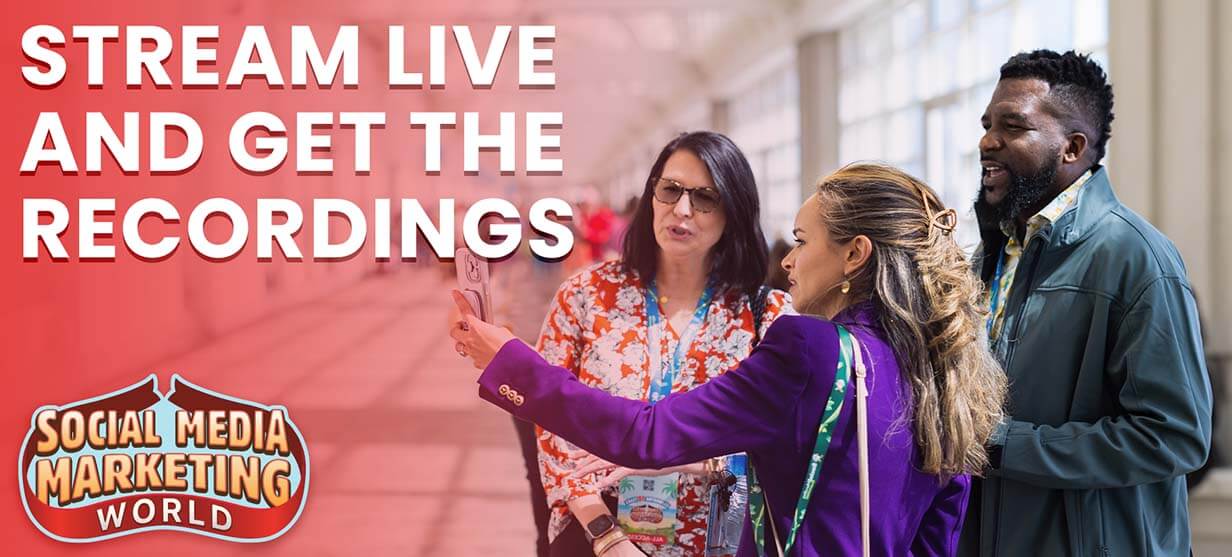
Can't Attend Social Media Marketing World in Person?
If joining thousands of marketers in San Diego this March isn't an option for you, don't worry.
With a Virtual ticket the conference comes to you. You'll get access to ALL of the content—including the sessions, keynotes, AND the extra day of workshops—all from the comfort of your home or office. Plus, you can livestream the keynotes and sessions in real time.
Ready to skip the crowds and have a full 365 days to review and implement the incredible content from Social Media Marketing World?
Yes, I want to stream live and get the recordings.
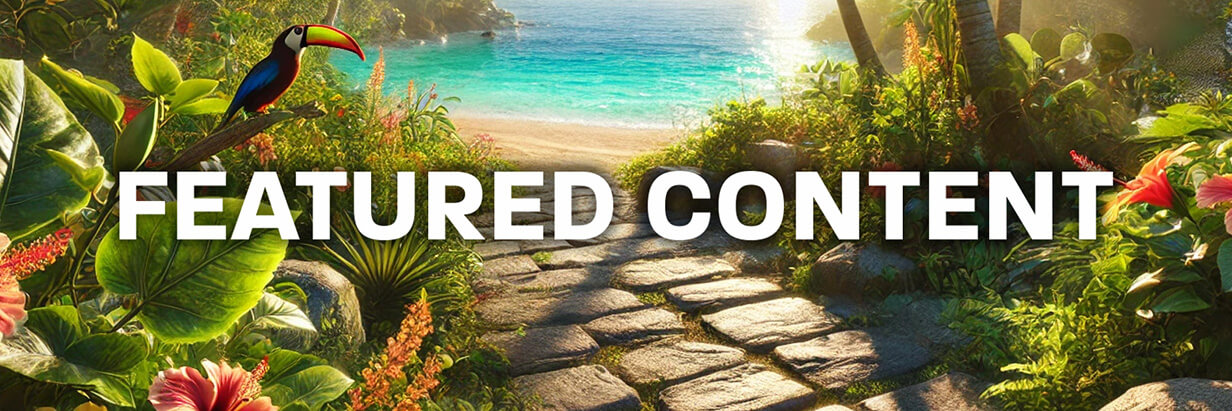
Getting Started With Microsoft Clarity
Feeling overwhelmed by traditional analytics tools? Looking for a more intuitive way to understand your website visitors?
In this article, you'll explore how Microsoft Clarity offers a user-friendly alternative to complex analytics platforms, providing valuable insights for marketers of all skill levels.
Why Microsoft Clarity Matters for Marketers in 2024
Microsoft Clarity has emerged as a powerful alternative to traditional analytics platforms, offering marketers an intuitive way to understand user behavior. While Google Analytics remains a standard tool for many marketers, Microsoft Clarity provides unique, real-time insights that are specifically designed for marketers.
It uses marketers' language. It uses a lot of pictures, not a lot of data tables.
The data visualization and analysis really sets Microsoft Clarity apart. Unlike Google Analytics 4, which can feel like "flying an airplane" with its complex interface and technical requirements, Clarity lives up to its name by making data accessible and actionable. While GA4 requires extensive setup and focuses on attribution modeling that can take up to seven days to process, Clarity provides immediate insights through visual data.
One of the most compelling aspects of Microsoft Clarity is that it's completely free, making it accessible to businesses of all sizes. Even enterprise-level companies are adopting it for its powerful features and user-friendly interface.
How to Add Microsoft Clarity to Your Website
Setting up Microsoft Clarity is straightforward and requires minimal technical knowledge. Here's how to get started:
First, visit clarity.microsoft.com and create an account. You don't need a Microsoft account—you can use your existing Google account to sign in.
Next, create a space for your website within Clarity. You can also create separate instances for different products or sections of your website, allowing you to focus on specific user journeys.
Similar to other analytics platforms, you'll receive a piece of code to add to your website. If you're using WordPress or another content management system, simply add this code to all your pages.
Unlike Google Analytics 4, which requires data to collect useful data, Microsoft Clarity starts capturing valuable data immediately after installation. You can begin seeing results within hours of implementation, making it possible to take action on insights the same day you install it.
Explore These Core Features
Microsoft Clarity offers several powerful features that help marketers understand user behavior:
Heat Maps and Area Maps: Heat maps show where users are focusing their attention on your pages, using color coding to indicate areas of high engagement. Red "hot" areas indicate high user attention, while blue "cold" areas show less engagement.
Area maps take this analysis further by showing the percentage of clicks in different sections of your page. For example, you might discover that your top navigation receives 30% of clicks while the bottom navigation gets 20%. This information helps you understand if users interact with your site as intended and can guide optimization decisions.
Scroll Maps and Mobile Analysis: Scroll maps track how far users scroll down your pages, helping you understand content visibility and engagement. Clarity automatically adjusts these visualizations for different devices, allowing you to see exactly how your mobile site appears to users. This mobile-specific analysis is crucial for understanding your site's performance across devices without manually checking mobile versions.
Screen Recordings and Hidden Tab Analysis: The platform automatically records user sessions, allowing you to see exactly how visitors interact with your site. These recordings are anonymized for privacy but provide valuable insights into user behavior.
A unique feature of Clarity is its ability to distinguish between visible and hidden tabs. This helps you understand true engagement by separating users who are actively viewing your content from those who have your site open in a background tab. You can create segments to analyze users based on how long they kept your page visible or hidden, providing more accurate engagement metrics.
Smart Events and Page Performance: Clarity automatically identifies and tracks important user behaviors, creating "smart events." For example, if your site has multiple "Continue Reading" buttons, Clarity will recognize this pattern and track how users interact with these elements.
The platform also analyzes page load speeds, helping you identify performance issues that might affect user experience. This technical data is presented in a marketer-friendly way, making it easier to identify and address performance problems.
Today's advice is provided with insights from Chris Mercer, a featured guest on the Social Media Marketing Podcast and presenter at Social Media Marketing World.
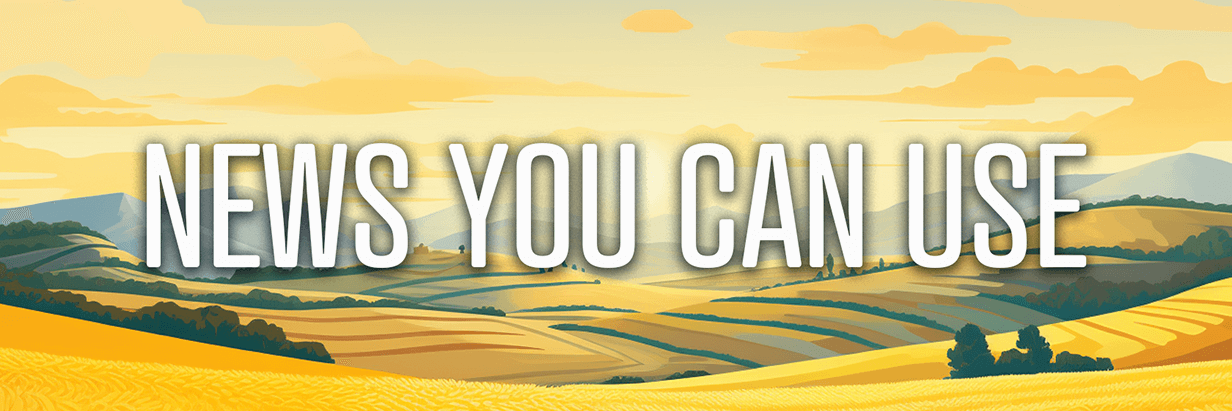
New Reels Tab: Instagram is introducing a new tab to its Reels platform to show users which videos their friends have liked or commented on. The feature is reminiscent of Instagram's previous "activity" feed, which was discontinued in 2019 but has been updated for the short-form video format. Source: Instagram
TikTok Ban Upheld: On Friday, the United States Supreme Court issued a unanimous 9-0 decision upholding legislation that would ban TikTok in the United States based on national security concerns. According to the ruling, the ban would take effect on Sunday unless TikTok's Chinese parent company, ByteDance, sells the popular short-video application. Source: Reuters
Meta's Detailed Targeting Exclusions: Advertisers will retain the ability to exclude employers through Audience controls at the account level. Custom audiences within the exclusions field will be deprecated, though advertisers can continue using custom audience exclusions by utilizing the excluded_customer_audiences field. The implementation window for developers to make these code changes opens on January 21, 2025, with a completion deadline of April 21, 2025. These changes will be implemented in Version 22 of the platform. Source: Meta
Instagram Profile Changes Announced: The platform shifted to a tall grid format, motivated by the prevalence of vertical photos and videos, which are better displayed in rectangular formats. Acknowledging that this change disrupted users who carefully curated their grids, Instagram will improve thumbnail customization features to help users achieve their desired aesthetic. The platform plans to integrate Highlights into the grid as a separate tab, addressing the current issue where Highlights create visual complexity and push down grid content. To maintain creator control, Instagram is developing a tool that will allow users to reorder their grid according to their preferences. A new feature will enable users to post content directly to their grid, bypassing the main feed entirely. Source: Mosseri via Threads
Instagram Edits App: Edits is a comprehensive creative suite. The app will feature a dedicated inspiration tab and a section for storing early creative ideas. Users can access the same enhanced camera system used to record the announcement video. The app includes standard editing tools and allows creators to share draft versions with friends and fellow content creators. The app will provide detailed analytics about video performance for videos shared on Instagram. The app, rolling out next month, is currently available for pre-order on the iOS App Store, with an Android version in development. Source: Mosseri via Instagram
X Video Tab: The platform announced an immersive video tab, found in the app's bottom bar, is rolling out to users in the United States. Source: X via X
3-Minute Reels: Instagram users in the United States can publish reels that are up to 3 minutes long in the Reels editor. Additionally, Reels up to 3 minutes long will be eligible for recommendations. Source: Instagram via Threads
Instagram Details Algorithm Insights: Adam Moserri says the three most important ranking signals for both categories are watch time, likes, and sends. For connected content (followers), likes carry slightly more weight in the ranking algorithm. For unconnected content (non-followers), sends have a higher influence on content ranking. When analyzing content performance through insights, creators should focus on three key metrics: average watch time, likes per reach, and sends per reach. These metrics are the primary indicators of how well content will be ranked and distributed on the platform. Source: Instagram
LinkedIn Ads Attribution: LinkedIn developed a hybrid attribution system combining bottom-up multi-touch attribution (MTA) and top-down marketing mix modeling (MMM) to better understand marketing campaign effectiveness. This system replaces traditional rule-based attribution methods. Initial results show significant improvements over last-click attribution, particularly for upper and mid-funnel campaigns. Video ads, digital displays, and social media saw a 150x increase in attributed credit. LinkedIn estimates this will drive a 5% lift in marketing-driven revenue in FY25. The system is being implemented for LinkedIn's internal marketing and will be extended to LinkedIn Marketing Solutions platform advertisers. Source: LinkedIn
LinkedIn Lawsuit: The lawsuit against LinkedIn alleges unauthorized sharing of Premium users' private messages for AI model training. Filed in California federal court, the lawsuit claims LinkedIn automatically opted users into data sharing in August 2023 through a new privacy setting, then modified its privacy policy and FAQ section to cover these actions retroactively. LinkedIn denies these allegations as "false claims with no merit." The company has not enabled AI data sharing in the UK, European Economic Area, and Switzerland. Source: BBC
Meta's Marketing API: Version 22.0, released January 21, 2025, deprecated the Advantage+ Creative Standard Enhancements bundle in favor of individual creative enhancement opt-ins. Developers must now opt-in to specific features like image templates, touchups, text optimizations, and comments for both Single Image and Video Ads instead of using the general standard_enhancements request. While existing campaigns can continue running with the original bundle settings, new or updated ads after January 21, 2025, must use the individual feature opt-ins for successful API requests. Starting January 27, 2025, new features supporting ad previews and opt-in status will gradually roll out to all API versions, reaching full availability by the end of February 2025. Advertisers have a 90-day grace period from January 21, 2025, to upgrade to the latest version before potential API call failures. Source: Meta
YouTube Creative Updates: Q&A stickers can now be added to mobile livestreams and shorts, offering customizable real-time audience engagement. Shorts templates now support photo imports during template creation and include a toggle countdown timer option instead of the default 3-second countdown. Following the 2024 YouTube app design updates, the mini player is being tested with new features, including an updated interface and docking capabilities for select content, with potential broader expansion based on user feedback. Source: YouTube
YouTube Experiments Announced: Premium members can activate multiple experimental features simultaneously through youtube.com/new, expanding from the previous limitation of testing one feature at a time. The new high-quality audio enhancement provides Premium members with 256kbps audio on music videos, delivering improved clarity and depth in sound quality. iOS users with Premium subscriptions will gain access to Picture-in-Picture functionality for YouTube Shorts, enabling them to watch Shorts while using other applications or checking messages. Another iOS-specific feature, Smart Downloads for YouTube Shorts, will automatically select and download recommended Shorts content for offline viewing. The "Jump ahead" feature, previously only available on mobile devices, is now accessible on web browsers, allowing users to skip to key moments in videos. Finally, Premium users will soon have access to expanded playback speed options on mobile devices, with speeds reaching up to 4x the standard rate. Source: YouTube
What Did You Think of Today's Newsletter?
Did You Know?
Nail polish was first developed in ancient China around 3000 BCE, where it was made using ingredients like beeswax, egg whites, gelatin, and natural dyes, including crushed carmine beetles for red hues.

Michael Stelzner, Founder and CEO
P.S. Add
michael@socialmediaexaminer.com into your contacts list. Use Gmail?
Go here to add us as a contact.
We publish updates with links for our new posts and content from partners. Your information: Email:
tukangpostoemel@gmail.com Opted in on: 2021-09-06 17:20:47 UTC.










